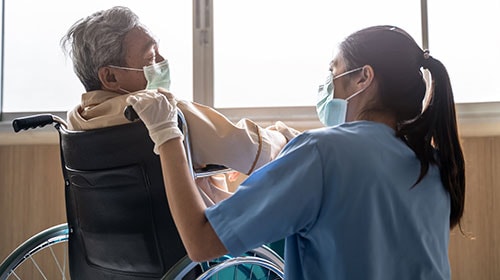Key points
- Invasive group A Streptococcus (GAS) infections in long-term care facilities (LTCFs) should be investigated.
- An effective investigation can help prevent additional cases and outbreaks.
- Use these tools for detailed approaches to investigating and controlling GAS infections in LTCFs.

Investigate even a single case
An investigation is warranted for even a single case of invasive GAS infection in a resident of a LTCF. This is due to the potential to prevent additional cases and subsequent outbreaks in populations at high risk of severe outcomes.
The purpose of the investigation is to:
- Identify any additional symptomatic cases among residents and staff
- Identify and treat asymptomatic carriers
- Assess and improve current infection control practices in the facility
- Identify potential transmission routes
- Identify routes of transmission, if two or more cases are identified in a 4-month period
Investigation tools
The tools to investigate clusters of invasive and non-invasive GAS infection depend on the number and type of cases. Each increase in cases necessitates a bigger response to control the outbreak.
These investigation tools can also be used to respond to clusters of non-invasive GAS infections (e.g., wound infections, pharyngitis).
Scenario: 1 case
Use this tool when 1 invasive case of GAS infection is identified among LTCF residents.
Scenario: 2 cases
Use this tool when 2 (including at least 1 invasive) cases have been identified among LTCF residents.
Scenario: 3 or more cases
Use this tool when 3 (including at least 1 invasive) or more cases have been identified among LTCF residents.
